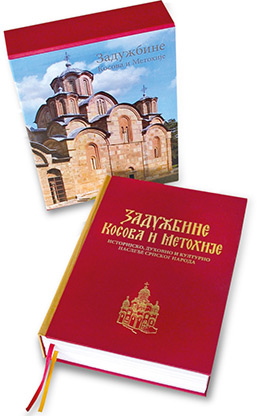One of America's greatest artists of Serbian extraction, Alexander Dzigurski, recently passed away in San Francisco, near his beloved Pacific Ocean. Dzigurski was an internationally known artist, famous for his unique and colorful seascapes. He was blessed with a prolific talent for capturing the action and color of the sea on canvas. One of his larger canvases (36"x48"), called From Sea to shining Sea, hangs in the Franklin Mint Museum. It was painted in 1976, in honor of the nations Bicentennial, when the Franklin Mint Gallery of American Art commissioned him "as America's finest painter of the sea" to paint his expression of the sea that bounds the beauty of this noble land.
.Dzigurski's work has been the subject of 3 books, and a 16mm film called "The Palette and the Symphony." The film serves as a photographic catalogue, following the direction of Dzigurski's painting career, recording the years of the artists travels, when he painted everyone of America's great mountains, form the Green Mountains of Vermont to the Adirondacks, to Pikes Peak in Colorado and beyond to Mt. Whitney. The Findlay Art Galleries of Chicago was one of the galleries happily purchasing almost everything that Dzigurski had to sell.
Dzigurski always thought that by capturing the grandeur of Americas seas and the glories of her mountains, he was able to represent the American panorama. The Great Smokies, Mt. Shasta, and the Grand Tetons were some of the subjects captured by his artist brushes. Americas natural wealth, he interpreted, was a visual metaphor for her munificence and freedom. Dzigurski dedicated his skill to interpreting Americas shores and summits in a fifty year celebration of his being free from the political paranoia that had destroyed much of Europe during his youth. But although his landscape art hangs in some of the most prominent homes and museums of America, the artist always maintained a spiritual security, and we of Serbian Orthodox heritage are lucky that some of his finest ecclesiastical works can be found in several of the Serbian Orthodox Churches in the east.
Author Phyllis Barton called Dzigurski a product of his race, environment and specific time. These factors, she wrote, influenced the course and production of his work.
Dzigurski was born on February 1, 1911, on a farm in Stari Becej, an agricultural community in Backa, then part of the Austro-Hungarian Empire. His fathers name was Jovan, who was a wheat farmer, and very impatient with Alexs inclination to educate himself in the arts, something he considered an unproductive occupation. Dzigurski remembers his mother, Nevenka Zivkov, as being cooperative and wonderful, and understanding her sons talents and desires to do more than help on the farm. Perhaps it was because Alexander, the youngest of their four children (Mita, Ivan, Zorka, were older), drew his mothers and his teachers attention from a very young age, with his unusual artistic talents. His uncompromising work ethic landed him in the School of Art in Belgrade, after he turned to the Serbian Church for help. He lived at the Monastery Rakovica in Belgrade for four years, supporting himself by painting restorations of old iconostases and portraits for private families. He graduated in 1929 at the age of eighteen.
Considered an especially gifted student, he went abroad to study at the Academy of Art in Munich, Germany. At the end of 1930, he volunteered to serve 2 years in the Kings Navy (Kingdom of Yugoslavia, previously called the Kingdom of Serbs, Croats and Slovenes). His favorite memories of that time are of Boka Kotorska, where he compared the Gulf of Kotor in Montenegro to Shangri-La. These memories provided inspiration and the scenery for Dzigurskis first paintings of the sea.
Upon his release from the Navy, he married Lenka, his old school sweetheart, much to the consternation of both his father, and of his wealthy father-in-law, who considered Dzigurski a poor prospect. A daughter, Jelena (Kolarovich), was born to the couple in 1933. Dzigurski opened his first studio in Novi Sad, called "Zograf," He then had two ecclesiastical commissions, the restoration of the icons in the Serbian Orthodox Church at Gospodjinci and the creation of the designs for the iconostasis of the Basilica of St. Elijah in Backa Topola.
Dzigurski was mobilized into the Yugoslav Army in April 1941, where he was assigned to the communications division. Unfortunately, within a few weeks, most of his unit was taken prisoner by Hitlers German army. Fleeing in retreat, Dzigurski ironically found himself marching past the Basilica where six months earlier he had participated in the iconostasis consecration liturgy. As Yugoslavia continued to be dismembered by the Nazis, Dzigurski had to abandon his prosperous portrait studio. In the autumn of 1941, he moved his wife and daughter Jelena to Stari Becej. During the war the family lived in Vienna. After the war Dzigurski lived in Rome, Italy.
Dzigurski and his family arrived in New York harbor in 1949 aboard the boat, "Marine Jumper." He was introduced to the Serbian Orthodox Church community by Bishop Dionisije Milivojevich, who had been his professor in Yugoslavia, at the Teologia School near Belgrade. Since the Bishop was acquainted with Dzigurskis artistic ability, he asked Dzigurski to paint some icons for the small memorial chapel in Shadeland, PA.
From 1951-60, he was commissioned to paint nine churches. When one looks at the expressive religious figures Dzigurski painted at this time, it is easy to see why so many people feel a mystical bond between themselves and the sainted icons. Dzigurski reached back into his own past when he went to paint the ecclesiastical art, back to the rich interior of his church in Stari Becej, where he grew up. Every Saturday evening and every Sunday, Dzigurski went to the church with 52 icons done by the great Serbian painter, Uros Predic.
Author Barton further explains the role between a Serbian artist and his art: "It is in her achievements in the field of Byzantine art that Serbia has made her greatest contributions. This legacy, little known because of Serbias geographic inaccessibility and political repression, survives in the churches.
Dzigurski was awarded the commission to design, paint and install the iconostasis of St. Elijahs Serbian E.O. Church in Aliquippa, PA in the fall of 1955, finishing the work in 1956. He followed a classical arrangement, and the icons are done in a traditionally Byzantine manner. He also painted the iconostasis of St. Georges Church in Steubenville, Ohio, around the same time, along with the murals of St. Sava Serbian Orthodox Church in McKeeport, PA. The icons are pictorial testimonials to episodes in biblical and Serbian history. In 1957, Dzigurski painted the 22 icons of the iconostasis in Milwaukee, Wisconsin, a project he considered one of his most significant ecclesiastical projects. He also painted murals and icons for St. George Serbian Orthodox Church Racine, Wisconsin.
None of the beautiful and magnificent icons mentioned above were ever signed by Dzigurski, himself. Barton says, "Like most of the Orthodox ecclesiastical painters who have gone before him, Dzigurski has remained anonymous. He views his ecclesiastical art as a sacred craft that excludes the intervention of human inventions."
Daughter Jelena, was married in 1957. To this day, she still fondly and vividly remembers working on the mosaic icon of St. Elijah on the outside of the church, welcoming people to the sanctuary named in his honor in Aliquippa, PA.
In 1968, Dzigurskis loving and supportive wife, Lenka died. A period of depression followed, where he lost interest in his painting, and in life in general. A broken arm served as his introduction to Dorothy T. Dravis, a nurse, whose personal charm and encouragement helped him through this difficult period in his life. The birth of his second child, a son, aptly named Alexander Jr., gave the artist renewed exuberance and vitality that appears in his works.
Permanent collections of his work are in the Franklin Mint Museum of American Art, in Franklin enter, PA; R.W. Norton Gallery in Shreveport, LA; the Republic Bank of Dallas, Dallas, TX; the Michigan Bank of Chicago, IL.; the Ravenswood Bank of Chicago, IL.; Caterpillar Tractor Co., Peoria, IL. Dzigurskis paintings are found in the homes of some of the best known collectors of art ranging from New Jersey to California. His awards are too numerous to mention.
Alexander Dzigurski, Serbian-American artist, died on November 21, 1995. His long and productive life, whose art was full of power, richness, rhapsody and diversity, has earned him the honor of being called one of Americas most esteemed, beloved artists. We pay special tribute to him and his family for the great contributions he made to Art and the Serbian people.














